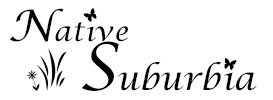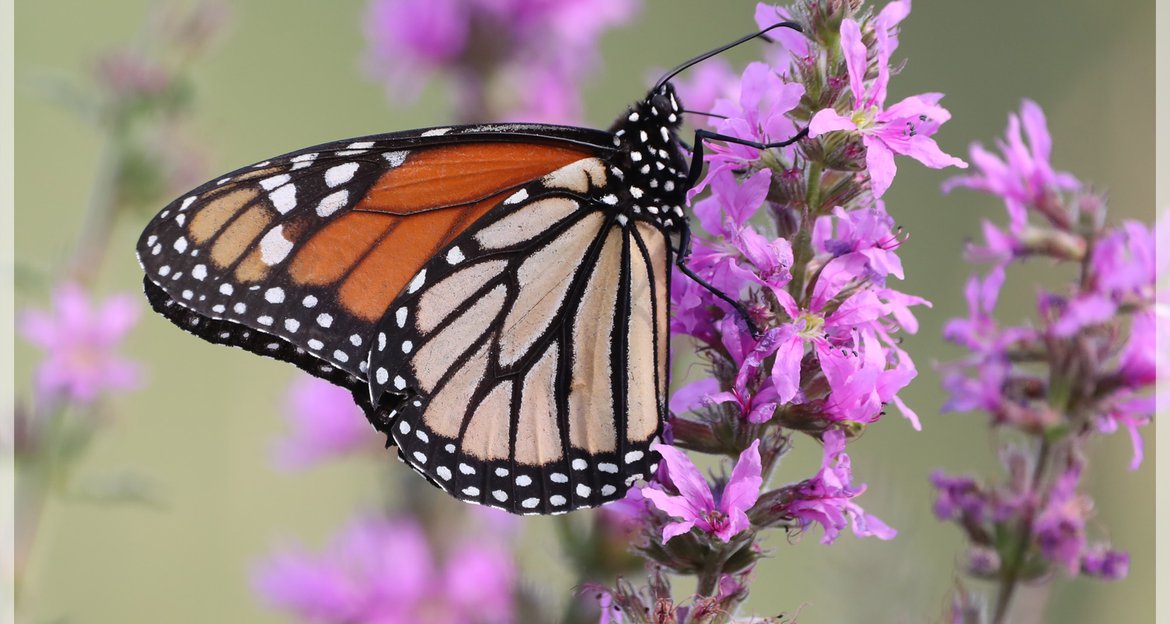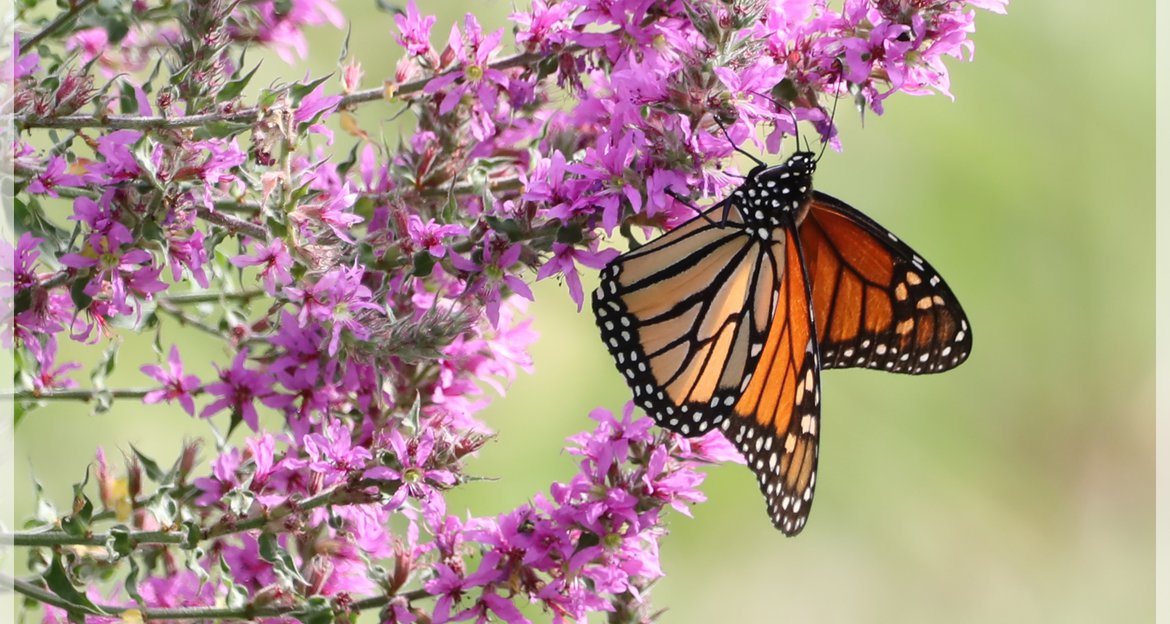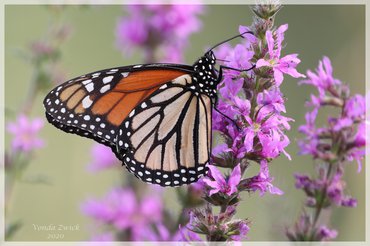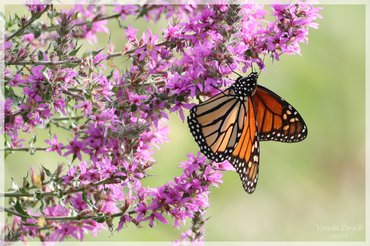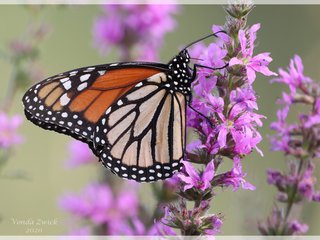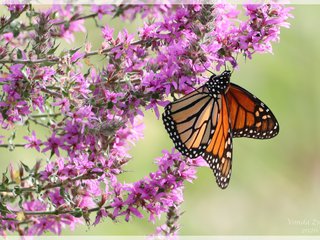Invasive Purple Loosestrife: Threatening the Pond Habitat
Posted by Vonda on Aug. 17, 2020
I see a number of nonnative plant species at the Ruth Macintyre Conservation center, but one of the most disturbing is Purple Loosestrife.
Purple Loosestrife was brought here from Europe in the 1800's. It has now become a threat to water fowl and other wildlife inhabiting our wetlands. Purple Loosestrife is able to crowd out native species until our diverse wetlands become a monoculture of this invasive plant that offers little back to the ecosystem. The diverse vegetation that feeds and shelters wildlife disappears, and with them, the wildlife that depend on them. Purple Loosestrife itself does not provide much in terms of food or shelter to wildlife.
While butterflies and bumblebees pollinate the flowers, there are no natural predators, with no known native insects to feed on the plants and control their spread. According to the Illinois Natural History Survey, a single stalk can be extremely prolific, producing 300,000 seeds.
There is no doubt that when in bloom, Purple Loosestrife can be beautiful. But unfortunately, that beauty hides a serious threat to our ecosystems.
